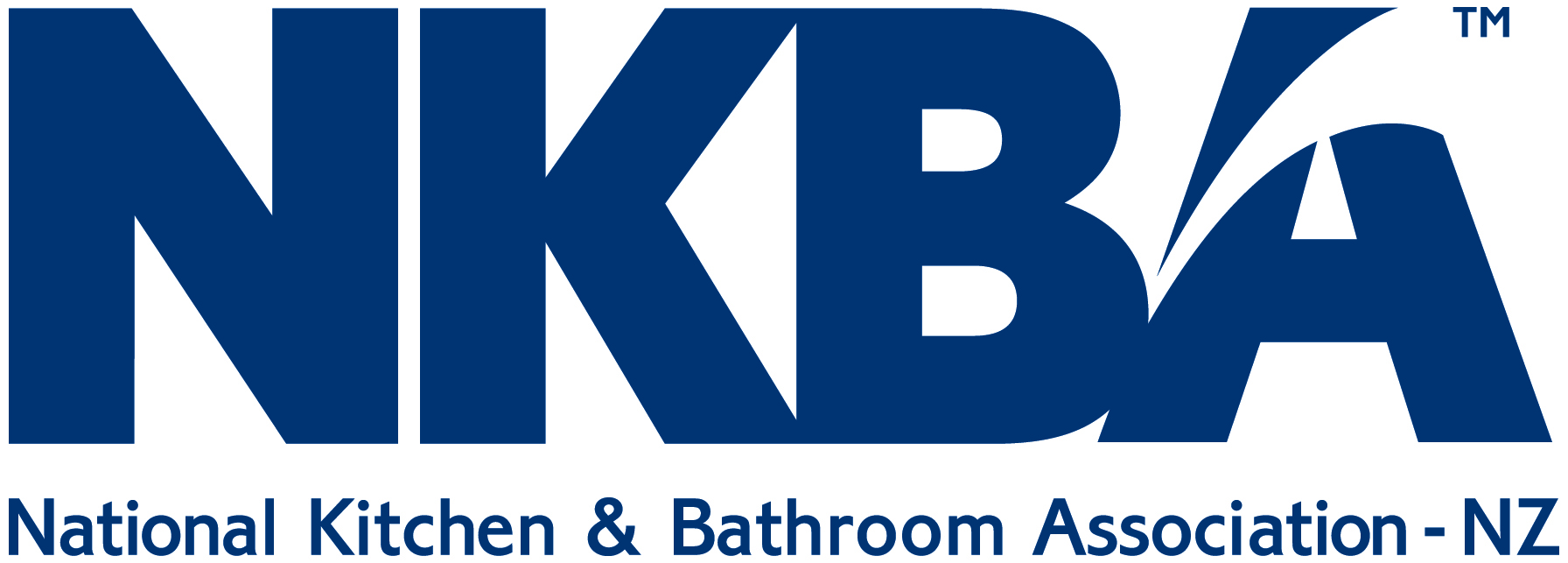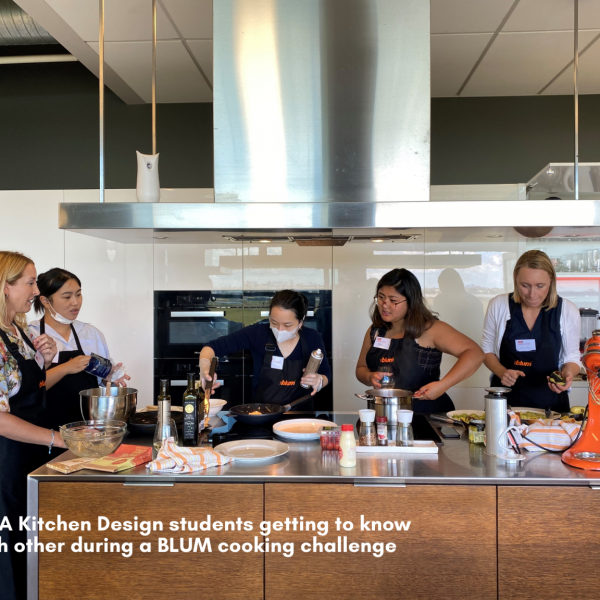In early February 2022, NKBA held a webinar for anyone interested in pursuing study of the New Zealand Diploma in Kitchen Design (Level 5). The webinar’s panel of speakers included Milvia Hannah and Mark Bruce, who are both tutors on the course, Jose David of BCITO, and two Diploma students – David Orchard and Danielle Fistonich. The following FAQ is a summary of the webinar. If you have further questions about the Diploma, please contact the NKBA office.
Who runs/manages the Diploma?
NKBA has partnered with BCITO to deliver the New Zealand Diploma in Kitchen Design. New students can contact the NKBA Head Office (info@nkba.org.nz or (03) 322 1957) to find out more about the course and be connected to a local BCITO Training Advisor to confirm their eligibility and start the enrolment process.
What is covered in the course?
There are two five-day block courses and four six-month assignments. The first block course is run by tutor Mark Bruce. In this section of the course, Mark says the main component is spatial planning and working through the 21 guidelines of functionality that were designed specifically for the New Zealand design industry.
“Written specifically for New Zealand, our functionality of kitchen design ‘bible’ covers everything from ergonomics to acceptable working heights and other spatial requirements. In the course I also cover some of the failings in kitchen design which is always interesting. We look at where design goes wrong and how we can do better. I also explore how to gather an appropriate client brief, site measurement, presenting plans, marketing, electrical, plumbing, and of course cabinetry. As part of the course, we also attend a fun day out, which normally involves a cooking demonstration, and a visit to some showrooms to improve product knowledge,” says Mark.
The second block course is run by Milvia Hannah and explores colour and design elements. Milvia says the course is interactive and hands on.
“In my course component we explore the power of colour, including colour theory, colour schemes, the colour wheel and colour psychology. It’s important because a lot of clients are afraid of colour and designers need a clear understanding of the colour system and how to create harmony to suit client’s needs. We also cover design elements and design principles and how to achieve a good design aesthetic. This includes the study of line, shape, form, space, balance, rhythm, emphasis, harmony, and scale and proportion. Another component of my course is lighting and technology. In lighting we examine lighting plans, lighting schemes, fittings, effects, uses and the different levels of lighting, while in technology we look at all aspects of current technology but mainly smart technology, automation, energy efficiency and sustainability,” says Milvia.
What skills will a student walk away with once the Diploma is completed?
In addition to a comprehensive kitchen design education, Milvia says that it’s important that students walk away with skills such as the ability to listen and the confidence to charge for their design work.
“You need to learn to be a good listener to ensure that when you meet with the client, you listen to their needs, so the end result is what they want. I also want all my students to place a value on their design work, their knowledge, experience and confidence. The Diploma takes commitment, and so I want students to walk away proud of their achievement,” says Milvia.
Who is the Diploma designed for? For example, how much experience is required and what are the prerequisites?
Officially six months of industry experience is required, however NKBA likes to make sure a student is ready before they take on the Level 5 Diploma. Mark says there is a good reason for this, as the course is set beyond a basic level.
“Before you begin your study, you need time in the industry to ensure you know the basics. If you turn up to the course thinking we will start from scratch, you will get lost. It’s my opinion, that students need to turn up with at least 1.5 years’ experience in the industry. We want you to feel comfortable and ready to start this journey,” says Mark.
It is also necessary for students to have experience with CAD software, as detailed plans are required for some of the course work and assignments.
For those designers that are very experienced with a lot of time in the industry, what does the Diploma offer?
It’s the icing on the cake, says Milvia. It gives your clients the confidence you know what you are doing and that you are capable of creating the complete package.
“Many experienced designers might not think they need to complete the Diploma, but clients need it. Clients like to work with people that they feel confident with. The Diploma helps provide this reassurance and it eliminates concerns over inexperience. I encourage every student to be proud of their certification and display their diploma, so it is visible in their work environment.”
How long does it take to complete the Diploma? And are there part-time or full-time options?
The New Zealand Diploma in Kitchen Design is a two-year course. It is part time, in that you can still learn and earn by maintaining your job while studying. If you need to take a break, for example maternity leave, it is possible to make these arrangements with BCITO.
What is the time commitment for the course/how many hours per week would a student need to spend on course work?
40 – 80 hours per assignment is required, spread out over five months. The time commitment required comes down to a student’s proficiency with CAD and drawing. It is recommended to start assignments early – perhaps spending one-two hours per week on study.
How much does it cost?
It is free until 31 December 2022. After this date, we are unsure of cost – once we know more, we will update the NKBA website.
What are the course dates?
The NKBA website lists all the upcoming course dates. In 2022, there are 13 Year One courses in 2022 and eight Year Two courses. Make sure to sign up early as many courses are oversubscribed.
Is there a component of the Diploma that requires some travel or is it all done remotely?
There is a requirement to attend the two one-week block courses, which are usually held in Auckland, Wellington and Christchurch.
How is the course assessed and who are the assessors?
The courses are assessed by the NKBA tutors, Mark and Milvia. However, BCITO checks assignments and markings, and ensures everything has been done correctly and meets their standards. There is a strong partnership between NKBA and BCITO to ensure transparency and impartiality.
Can someone take the course if they are self-employed?
We do have a lot of self-employed designers who attend the course. BCITO will assess individual designers to see if they have the experience required to complete the Diploma. Ideally there would be a mentor or private contractor involved to assist the student with their studies.
How does a designer sign up for the course?
Ideally you will be currently employed in the industry and have an appropriate amount of industry experience. Contact NKBA and they will connect you with a BCITO Training Advisor who will come out and talk to you about your options and sign you up for the course.
What else can NKBA offer students?
NKBA offers an automatic free NKBA student membership for the duration of study, which enables students to attend meetings and events held by their local NKBA Chapter. This is a fantastic way for students to extend their design knowledge and to network with the people that will support them on their career pathway.
Students can also attend a dedicated Student Day as part of the annual NKBA Conference and Excellence in Design Awards, and all students are eligible for entry into the NKBA Student Design Competition.
What options are there for scholarships?
Designers of NKBA scholarships are offered every year. Normally there are around three on offer annually – contact NKBA for more information.
BCITO also sometimes offer scholarships, so keep an eye on the BCITO website. You can also talk to your Training Advisor to see what other perks or competitions might be on offer.
Does the Diploma add to design confidence? What else can it do for your career?
David Orchard says the Diploma has helped greatly with his personal confidence.
“It has helped build my knowledge and I have become more confident and better at what I do. The networking has also been fantastic and led to new opportunities. It’s also been great to be exposed to new ideas and new ways of doing things,” says David.
What about cabinet makers who are considering the Diploma, is it a good option?
Yes, absolutely. It will give you a greater understanding of the full picture of kitchen design and improve your knowledge and abilities considerably. David Orchard, a cabinet maker and now student agrees, he says ‘go for it!’
“I had 10-15 years in joinery experience, and it has made me more confident, particularly with customer satisfaction. It’s great to understand how to design something that is going to be fit for purpose, as well as look great. As a cabinet maker you don’t always think about design and so the course has been really helpful. It makes you quicker in designing a solution. If I could do it again, I would do it sooner.”
How do you know if it is the right time to study?
Everyone has different reasons to study, and when the time is right will come down to your ability to commit time and energy to your study and whether you have had enough time and experience in the industry to make the Diploma worth your while.
Danielle Fistonich says for her the time seemed right because she had the support from her employer and the determination to better her knowledge.
“I had completed a degree in spatial design, but it didn’t cover kitchen design as much as I would have liked. After a few years of experience in the industry, I wanted to gain more knowledge in lighting, colours and material. When my employer asked if I would like to complete the Diploma, I jumped at the chance,” says Danielle.
Any tips or advice for those embarking on this exciting step?
Danielle says to stay committed, put your diploma on display, and network. NKBA say, take the leap, you won’t regret it!
For more information on the Diploma visit: https://nkba.org.nz/education/

